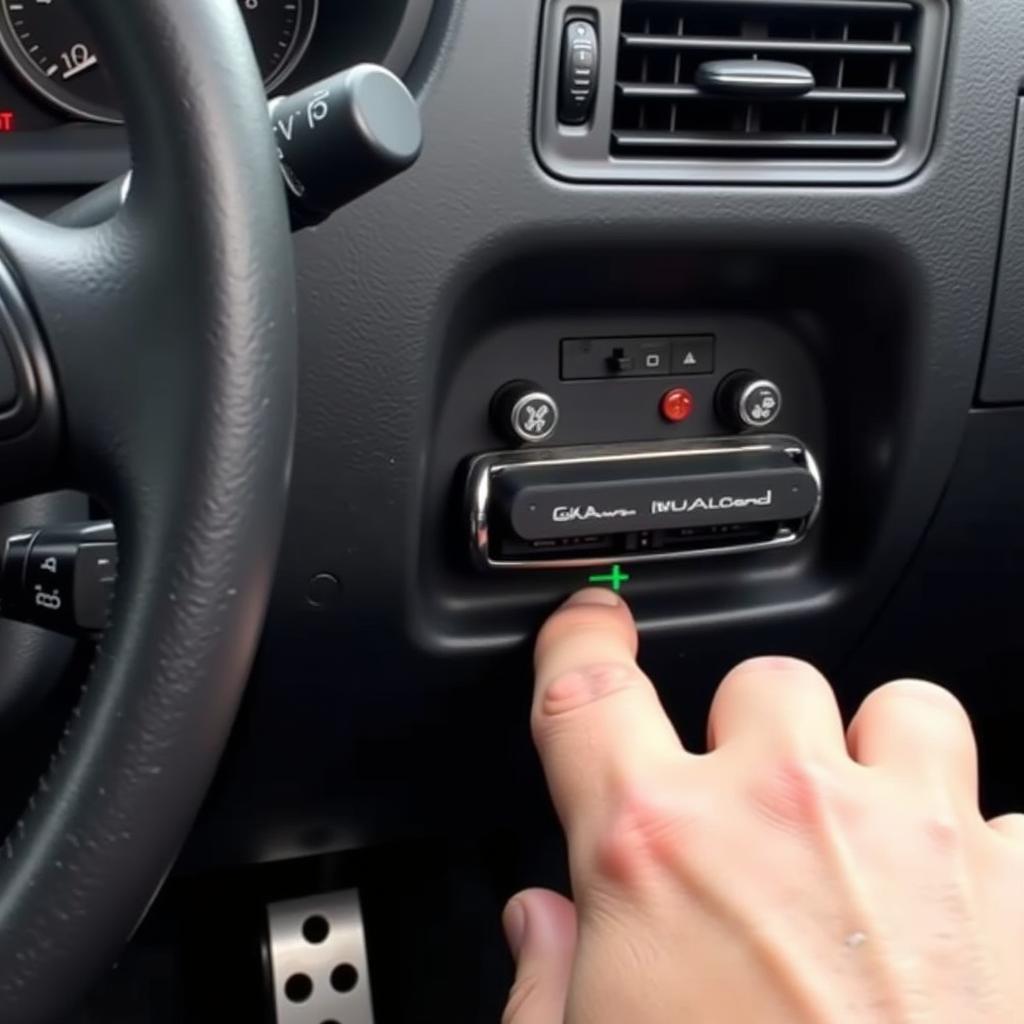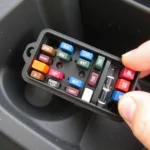Car diagnostic plug in tools have revolutionized the way we understand and maintain our vehicles. Gone are the days of relying solely on mechanics for even the simplest of checks. Today, with the right diagnostic tool, you can empower yourself to identify potential issues, save money on unnecessary repairs, and gain a deeper understanding of your car’s performance. This guide will delve into everything you need to know about these invaluable devices, from choosing the right tool to interpreting the data they provide. Where to plug in car diagnostic tool can be easily found in most modern vehicles.
Choosing the Right Car Diagnostic Plug In Tool
The market is flooded with various car diagnostic plug in tools, each catering to different needs and budgets. Understanding the key differences can help you make an informed decision. For basic diagnostics, a simple code reader can suffice. These affordable tools can retrieve and clear basic trouble codes, giving you a general idea of the problem. More advanced options, such as OBD-II scanners, offer real-time data, allowing you to monitor various parameters like engine temperature, fuel pressure, and RPM. Professional-grade scan tools provide comprehensive functionality, including access to manufacturer-specific codes, bi-directional controls, and advanced programming capabilities.
Understanding OBD-II and Its Importance
The On-Board Diagnostics II (OBD-II) standard is a universal system implemented in most vehicles manufactured after 1996. It provides a standardized interface for accessing diagnostic information. This means regardless of the make and model, your car diagnostic plug in tool can retrieve data through the OBD-II port. This standardization has been crucial in democratizing car diagnostics, making it accessible to DIYers and professionals alike.
Interpreting Diagnostic Trouble Codes (DTCs)
Once you’ve connected your car diagnostic plug in tool and retrieved the DTCs, understanding their meaning is the next step. Each code represents a specific issue within a particular system. For example, the code P0420 indicates a problem with the catalytic converter system. While the codes themselves provide a starting point, further investigation is usually required to pinpoint the exact cause. Resources like online DTC databases and repair manuals can be invaluable in this process. Remember, a DTC doesn’t necessarily indicate a catastrophic failure. It could point to something as simple as a loose sensor or a minor electrical glitch.
Beyond Basic Diagnostics: Advanced Features of Scan Tools
Professional-grade car diagnostic plug in tools offer a plethora of advanced features. Bi-directional control allows you to activate various components, such as fuel injectors or solenoids, to test their functionality. Live data streaming provides real-time insights into various engine parameters, helping diagnose intermittent issues. Advanced programming functions enable tasks like key fob programming and module resets. Car diagnostic system plays a crucial role in modern vehicle maintenance. While these features are typically used by professional mechanics, they are becoming increasingly accessible to DIY enthusiasts.
How Can Car Diagnostic Plug In Tools Save You Money?
Early detection of potential problems is key to minimizing repair costs. By using a car diagnostic plug in tool regularly, you can identify minor issues before they escalate into major expenses. For instance, a simple oxygen sensor fault, if left unaddressed, could lead to damage to the catalytic converter, a significantly more expensive component. Car diagnostic plug gives you the power to stay ahead of potential issues. Moreover, these tools can empower you to negotiate more effectively with mechanics, as you’ll have a better understanding of the underlying problem.
Are Car Diagnostic Plug In Tools Difficult to Use?
Not at all! Most modern car diagnostic plug in tools are designed with user-friendliness in mind. They often feature intuitive interfaces, clear instructions, and helpful online resources. Where to plug in car diagnostic tool polo is a common question, but the answer is usually straightforward – look for the OBD-II port under the dashboard. While professional-grade tools might have a steeper learning curve, basic code readers and OBD-II scanners are generally easy to operate even for beginners. Car diagnostic mobile mechanic can assist you if you are unsure.
Conclusion: Empower Yourself With a Car Diagnostic Plug In Tool
Investing in a car diagnostic plug in tool is an investment in your car’s health and your peace of mind. These invaluable devices empower you to understand your vehicle better, diagnose potential issues early on, and save money on unnecessary repairs. Whether you’re a seasoned DIYer or a car novice, a car diagnostic plug in tool is a valuable addition to your automotive arsenal.
FAQ
-
What is the OBD-II port? The OBD-II port is the standardized connector used to access a vehicle’s diagnostic system.
-
How often should I use a car diagnostic plug in tool? Regular checks, perhaps monthly, are recommended.
-
Can I clear trouble codes myself? Yes, most diagnostic tools allow you to clear codes.
-
Are all car diagnostic plug in tools compatible with all cars? Most modern tools are compatible with OBD-II compliant vehicles.
-
What if I can’t interpret the diagnostic codes? Online resources and repair manuals can provide further guidance.
-
Do I need a professional-grade scan tool? It depends on your needs and technical skills.
-
Can a car diagnostic plug in tool prevent all car problems? While it aids in early detection, it can’t prevent all issues.
Common Diagnostic Scenarios:
- Check Engine Light illuminated: This is the most common trigger for using a diagnostic tool.
- Poor fuel economy: A diagnostic tool can help identify potential causes.
- Rough idling or misfires: The tool can pinpoint issues with the ignition or fuel system.
- Transmission problems: A scan tool can reveal transmission-related fault codes.
Further Reading:
You might find these related articles on our website helpful:
- Understanding Your Car’s Electrical System
- Common Car Problems and Their Solutions
- Maintaining Your Car’s Engine
Need assistance? Contact us via WhatsApp: +1(641)206-8880, or Email: cardiagtechworkshop@gmail.com. Our 24/7 customer support team is ready to help.



